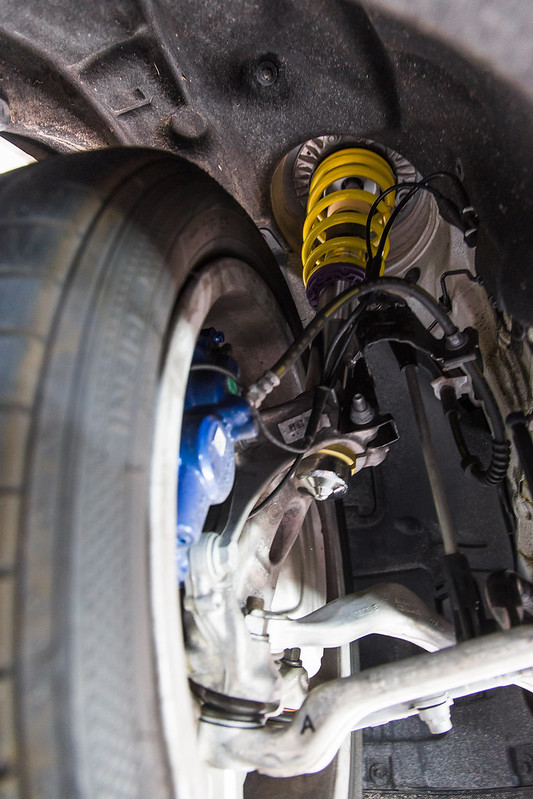


The last scenario is the outlier, he says, but can yield the greatest returns: “When someone has a longterm plan and invests in a standalone from the outset, they will never have to upgrade their electronics as they make upgrades to their vehicle. The next situation: “When a reflash or open-source tuning strategy exceeds the ability to control the power level of an engine.” Two important pieces of the standalone recipe: a laptop and someone to use it. The first on his list: “The ’alphabet soup’ approach, where various controllers are added to a vehicle as it’s upgraded–air-fuel controller, boost controller, ignition controller, flashed ECU, etc.–and the user is left with a host of electronics that all need to be programmed independently of one another and do not speak with each other.” The frequent result, he notes, is major engine failure. He sees three typical scenarios that spur the jump to a standalone ECU. “You know it’s time to consider upgrading your race car to a standalone ECU when what is controlling your engine and power adders is no longer effective,” explains Lawson Mollica at AEM Performance Electronics, a longtime supplier of standalone systems. Want deeper and more granular adjustability than reflashing your factory ECU gives you? An aftermarket ECU is in your future.ĭoes your car’s stock computer have very limited adjustability? (We’re looking at you, Honda and Acura and early Mazda Miatas.) Guess what? There’s an ECU for that. Need to control or compensate for power adders that your car never came with, like turbos or superchargers or hog-ass cams? Hello, standalone. Got an engine in your car that it didn’t come with originally? Aftermarket ECU to the rescue. We’re here to help guide you on that journey.
#Simon motorsports ecu flash software
From open-source software running on easily found hardware to military-grade solutions designed to endure the rigors of motorsport, the choices are endless. These days, builders have numerous options for standalone engine management, and they’re easier than ever to install, tune and afford.

For a lot of folks–those who simply want to add a performance exhaust, optimize their tune for high-octane fuel, or add a bit of boost to a turbocharged car–flash tunes in factory ECUs remain a solid choice.īut what if a build is more complex or more singularly dedicated? What if the owner simply wants more direct control over the 1s and 0s controlling their engine? That’s where aftermarket ECUs come in. Many popular cars had, and continue to be equipped with, ECUs that can be “reflashed” or reprogrammed. When a manufacturer released a new car, it challenged the aftermarket to “crack” the ECU–to reprogram it to operate outside its typical envelope–allowing the use of aftermarket hard parts.Īnd for a while, this system worked for enthusiasts. How much fuel and spark? When to fire that spark? The answers were based on how best to serve the driver’s wishes.Īll through the development of ECUs equipped by factories, a war with the aftermarket raged. Where early computer controls were based heavily on tables predefined by factory engineers, later OEM ECUs could monitor engine data–like intake and exhaust temperature, engine temperature, throttle position and more–to make decisions on the fly. Subsequent generations of factory engine controls added processing power and the ability to interact with the engine in real time. It could also work in reverse, altering the signal from the stock computer before sending it to the sensors. A piggyback would alter the signal it received from a sensor before passing it along to the stock computer. However, many needed additional “piggyback” controllers wired into the circuit. Early computer engine controls–essentially glorified hardwired logic circuits with limited processing power–had some flexibility to adjust engine parameters to compensate for upgraded hard parts. With the proliferation of computer-controlled powerplants, tuning is no longer done with a wrench and screwdriver, but with the adjustment of parameters controlled by the ECU.īut as the technology progressed, our desire to modify our engines with upgraded hard parts didn’t wane. Now it’s someone–maybe not even in the same room or state as the machine they’re tuning–hovering over a laptop that’s linked to a car’s onboard engine control computer. It used to be a guy in greasy overalls armed with a set of vacuum gauges and a great ear. In less than a generation–so, in little more than a couple of decades–the image of an engine tuning expert has shifted completely.


 0 kommentar(er)
0 kommentar(er)
